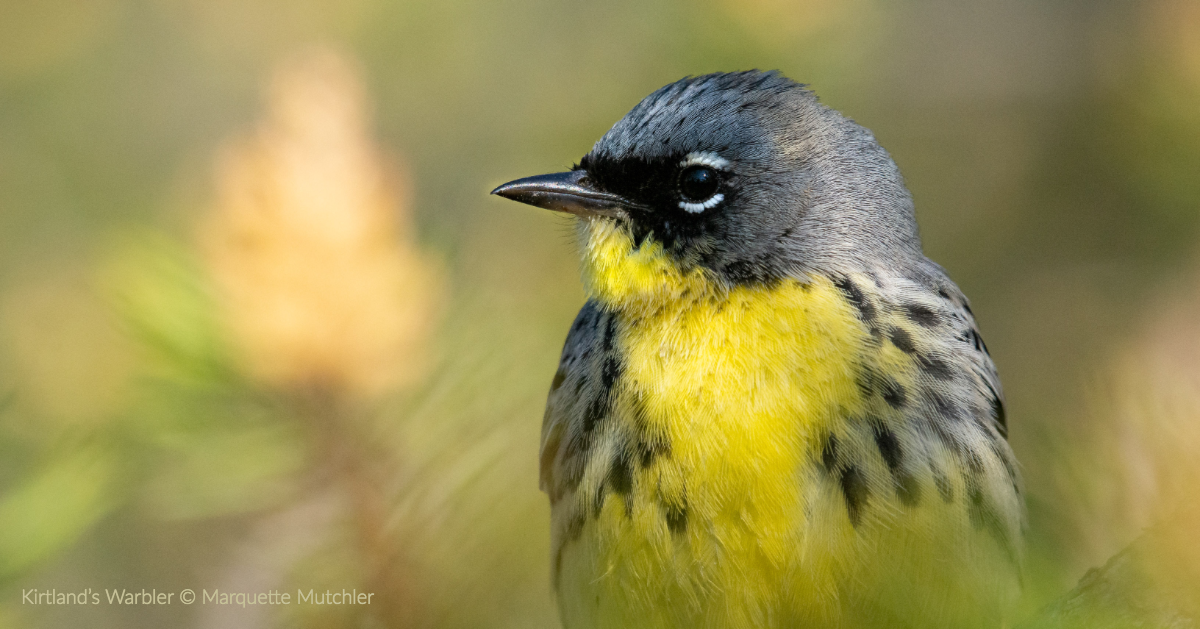The Kirtland’s Warbler isn’t the official bird of the state of Michigan, but in the hearts and minds of many state residents, it most certainly is. Once living on the brink of extinction, the Kirtland’s Warbler tells a tremendous story of conservation and endangered species recovery. Thanks to the collaboration of numerous organizations, the U.S. Fish and Wildlife Service has delisted the Kirtland’s Warbler, meaning this species no longer warrants protection under the Endangered Species Act (ESA). To delist a species, the Service must determine that the species is not threatened based on a number of factors, such as population size, recruitment, stability of habitat quality and quantity, and control or elimination of the threats.
Although the news of this success is exciting, some are leery of what looms ahead for this conservation-dependent bird. We are happy to announce our support of the delisting of this bird and are thrilled to see the support that has been put in place to ensure its long term success.
Please find below answers to some frequently asked questions regarding the future of conservation efforts for the Kirtland’s Warbler. If you have questions we have not answered here, please feel free to email them to [email protected].
Frequently Asked Questions About KIWA Conservation
What will happen to the Kirtland’s Warbler population after delisting?
- A post-delisting monitoring plan is in development, which will include a full population census throughout the Kirtland’s Warbler range. The census is planned for 2021, and for every fourth year through the delisting monitoring time period.
- A recently formed Kirtland’s Warbler Conservation Team will continue to use the best available science to make recommendations for habitat management. This coalition is made up of partners from government agencies, bird conservation organizations, and academic scientists.
- A full-lifecycle conservation plan is in progress, which will help the Kirtland’s Warbler in its breeding grounds, wintering grounds, and at migration stopover sites. This plan will address habitat needs as well as socioeconomic factors important to the long-term management of this species.
Will habitat management continue to support the Kirtland’s Warbler?
- Habitat management will continue, by Michigan DNR, U.S. Forest Service, and other entities. Kirtland’s Warblers depend on young stands of jack pine. “Young” refers to jack pine stands that are between 6 to 15 years, after a harvest or fire. Jack pines grow in dense stands after a fire, or after a harvest and planting regime, and Kirtland’s Warblers come into a young stand area when the trees are about 5 to 6.5 feet tall. Kirtland’s Warblers move on from a jack pine stand once it has grown to more than about 10 to 16.5 feet tall.
- Agencies will continue to manage for habitat at a rate that will support a sustainable breeding population of Kirtland’s Warblers.
- Research is in progress by agencies to assess the viability of Kirtland’s Warbler breeding use of red pine stands, as well as the use of jack pine where stands are planted at rates more economically viable.
Are Brown-headed Cowbirds harming Kirtland’s Warbler nesting success?
- Current research has documented that Brown-headed Cowbirds are no longer a major threat to the Kirtland’s Warbler breeding success.
- Recent publication: https://wildlife.onlinelibrary.wiley.com/doi/abs/10.1002/jwmg.21714
Resources
- Kirtland’s Warbler Conservation Team
- American Bird Conservancy
- US Fish and Wildlife Service
- MI Department of Natural Resources
- Kirtland’s Warbler Breeding Range Conservation Plan
- Like the Kirtland’s Warbler Initiative on Facebook
- Draft post-delisting monitoring plan
- Kirtland’s Warbler 101
Click here to read the Kirtland’s Warbler delisting press release from the U.S. Fish and Wildlife Service.

